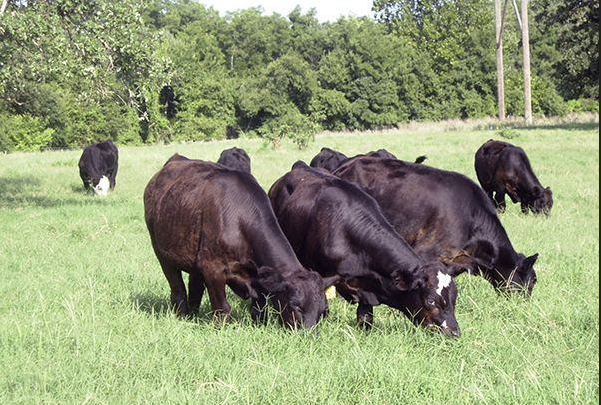 John F. Grimes, OSU Extension Beef Coordinator (originally published in The Ohio Cattleman)
John F. Grimes, OSU Extension Beef Coordinator (originally published in The Ohio Cattleman)
We are currently at a very important point in the annual beef and forage production calendar. We are concluding the winter hay feeding season and transitioning to the spring grazing season. Most producers are welcoming this change as we have just experienced a difficult winter with extreme conditions ranging from bitter sub-zero temperatures to excessive mud. I know that I am ready for warmer temperatures and greener grass!
Now is a good time to evaluate the forage portion of your farming operation and how it is influencing your beef production unit. Forage management decisions can focus on pastures as well as hay production, storage, and feeding. These decisions will have a huge impact on the overall profitability of your beef enterprise. Keep in mind that the largest expense in any cow-calf budget that you can find will be feed costs. Grazed and harvested forages obviously will comprise the largest portion of the feed expense line of the budget.
Most Ohio beef operations will typically have a forage base that combines a variety of cool-season grasses with legumes. A few producers will also utilize warm-season grasses when appropriate. Are your permanent pastures and hay fields producing adequate yields to support your beef herd in a “normal” year? If not, is the lack of production a result of poor forage stands or from a lack of fertility? The recommended period for making a spring forage seeding is quickly closing but a late summer seeding is a viable option. Perform a soil test every 2-3 years to insure that your fertilization program is meeting the needs of the forages to achieve productive yields.
If you are looking to generate a larger volume of quality forage, consider annual forages such as wheat, rye or ryegrass, triticale, brassicas or corn silage as options. These forages can be utilized in acreage devoted to annual cropping or as a part of a renovation project of a permanent pasture or hay field.
Harvested forage will be an expense for every beef producer regardless if you are purchasing hay or making your own. Forage expense is lower when the animal grazes the forage as opposed to mechanical harvest. Management decisions that can extend the grazing season and reduce the number of days feeding hay will positively influence potential profitability. However, as the winter of 2017-2018 has shown us, it is virtually impossible to eliminate the need for harvested feed in the winter.
If you are producing your own hay, make timely hay harvest a priority. Keep in mind that Mother Nature gives us an indication as to when we should harvest grasses and legumes. Research has shown that for every day that a forage displays a seed head or bloom, digestibility declines by 1⁄3 to 1⁄2 percentage units. I also understand that Mother Nature can make timely harvest a very difficult task due to frequent rains or poor drying conditions. Complicating this issue are other farming considerations within the total agricultural enterprise. However, harvesting overly mature forage generates a lower quality forage that will affect beef animal productivity at all stages of development.
Regardless if you produce or purchase your hay supply, storage and feeding practices are important considerations. University of Kentucky research has shown that unprotected hay stacked on the ground can experience significant economic losses ranging from 15% to 35%.
Here are a few key points to help reduce hay storage losses:
- Hay/soil contact is typically the primary source of losses associated with hay stored outdoors.
- If placing bales on the ground cannot be avoided, make sure a well-drained area is selected.
- Hay should be stored in an open area that can receive maximum sunlight.
- Bales should be placed so the sides of the bales do not touch. An exception to this would be if you were stacking bales in a pyramid fashion for covering under roof or with a tarp or other material.
- The flat ends of bales should be firmly butted against one another as this can protect the ends almost as well as if they were one continuous bale.
As much as I admire the beef cow, she can be very wasteful when it comes to hay consumption. Cows will trample, over consume, and use for bedding 25 to 45 percent of the hay when it is fed with no restrictions or is not processed. These losses are magnified when a multiple day supply of hay is fed. Hay loss and waste can be reduced by feeding hay daily according to diet needs. Feed hay at a well-drained site and on firm ground or a feeding pad when possible. Hay racks or bale feeders with solid barriers at the bottom prevent livestock from pulling hay out to be stepped on and help reduce hay wastage.
It is hard to underestimate the value of forages to any beef operation. There is not a single day in the year that the beef female is not consuming forages through grazing pastures or eating hay. Forage management decisions made by the producer should be made with the entire calendar year in mind.
Source: Ohio Beef Cattle Lettter



Leave A Comment